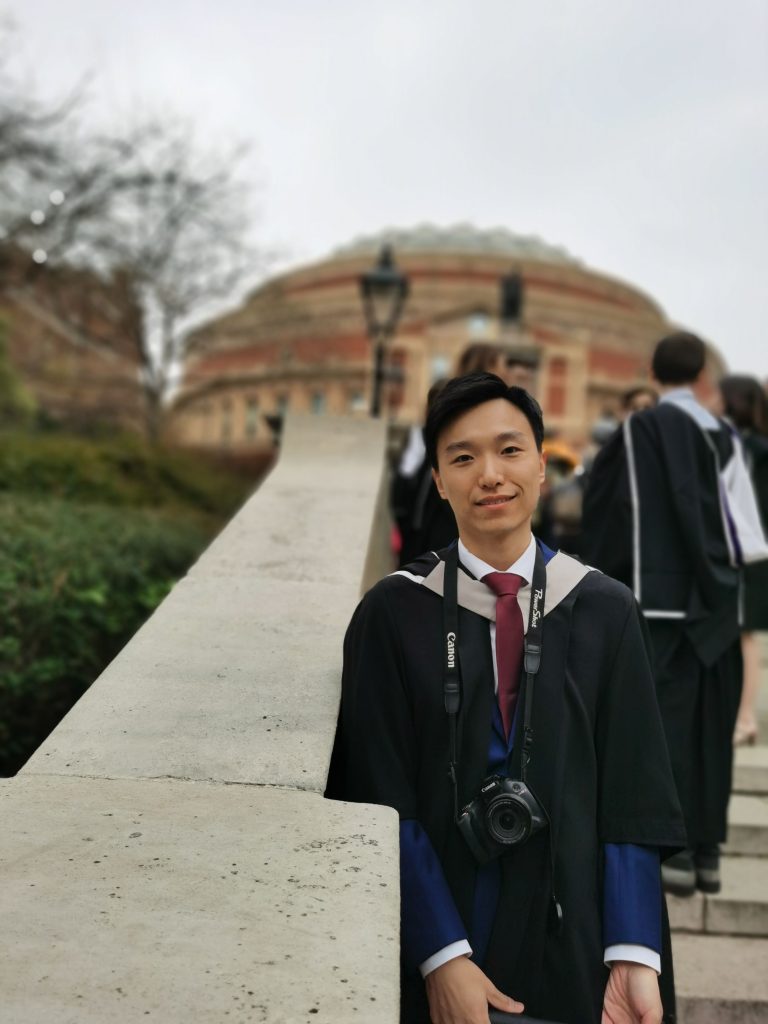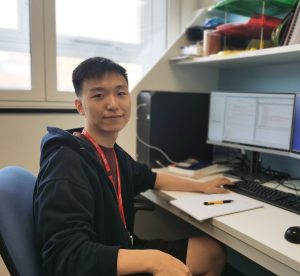Over 2022, we’re catching up with some of the people who came to study at IMSE on the Molecular Science and Engineering MRes. They are now going on to a wide variety of exiting jobs in the world. The IMSE MRes has been running since 2017, so there are more than 30 MRes alumni! This week, we speak to Griffin Gui, who studied at IMSE in 2018-2019.

Griffin’s career up to now
Griffin studied applied chemistry at the East China University of Science and Technology in Shanghai. He spent a year at Queen’s University Belfast as an exchange student where he did a graduation project designing and synthesizing molecular logic gates.
He chose to do the IMSE MRes for the feeling of designing and engineering molecules to make interesting functions happen. While on the course, he did a 3-month internship at Syngenta. His MRes thesis was supervised by Professor Claire Adjiman and Professor Jerry Heng. It was on computer-aided molecular design (CAMD) of solvents for separation processes. Specifically he was looking at solvents for dissolving solid materials and cooling crystallization, but not for reactions. He won the Prize for Excellence in Research and Science Communication for his year.
His PhD project at Imperial is building on the same theme of CAMD of solvents, but now for reactions rather than for separations. The aim of this project is to establish a systematic approach to the design of solvents for reaction processes. Griffin is now part of the PharmaSEL-Prosperity Partnership, an £11million project co-funded by ESPRC and Eli-Lilly. As of summer 2022, he’s a research intern at Eli-Lilly in Indianapolis.
In 2022, he published his first academic paper on computer-aided solvent design (doi.org/10.1016/B978-0-323-95879-0.50102-8).
What’s your core scientific interest?
My core scientific interest is computer-aided molecular design (CAMD). I am keen on improving the performance of designed molecules by integrating appropriate techniques into the CAMD framework. For example, during my PhD I (with my supervisors) develop an enhanced solvent design methodology named DoE-QM-CAMD. We employ quantum mechanical calculations and model-based design of experiments to develop surrogate models that are both accurate and fast to better design solvent molecules for optimal reaction kinetics.
How did the IMSE MRes prepare you for what you do now?
IMSE MRes taught me how to think across different scales (e.g., molecular scale and process scale) and helped me to look at what I had learnt during my undergraduate at a higher level. I learnt how we can integrate our knowledge of one problem at different scales into decision-making. These are pretty much what I need in my everyday work.
I love the course as a whole but I think the industrial placement is especially useful as one of the features of this course. The industrial placement was very nice opportunity for me to know what’s it like to work in one of the world-leading agricultural companies (I went to Syngenta) and what’s the gap between academia and industry. The experience also helped me to plan my next step after MRes.

What is a typical day like for you in your current work?
I usually get to my office around 10 in the morning. I start my work by checking my mailbox. After that I often check the results of the computational tasks that I submit to the HPC (high-performance computing cluster) in the previous day and submit some new tasks. Then I spend the rest of the morning reading papers/books. At 12, I have lunch with my colleagues in the common room (I love the Japanese food in Kimiko). It is sometimes followed by a coffee break. In the afternoon, I often have a seminar or a meeting (with my supervisors and/or industrial collaborators and/or other colleagues). And I usually have around 3-hour focus time in the afternoon to make progress in in my project (e.g., coding, running simulations, analysing data etc.). I finish my work around 6 pm.
What attracted you to this work?
Doing research greatly satisfies my curiosity and helps me build my self-worth. It feels really good to understand and explain macroscopic phenomena at a molecular level using elegant models/theories that can be both simple and sophisticated. And it feels even better knowing that the knowledge I produce is valuable and could be (hopefully in the future it will be) beneficial to many people in the world (in an indirect way though).

Do you know what you want to do next?
I would like to continue to work as a researcher after my PhD. I am more inclined to stay in academia, so perhaps to work as a postdoc after graduation. And hopefully I will be able to get a faculty position in a university at some point.
This is IMSE making a difference
We are very proud of our alumni, and always interested to find out what they do with their careers after they leave us. What could you do with an IMSE MRes on your CV?
Read about other alumni of IMSE: